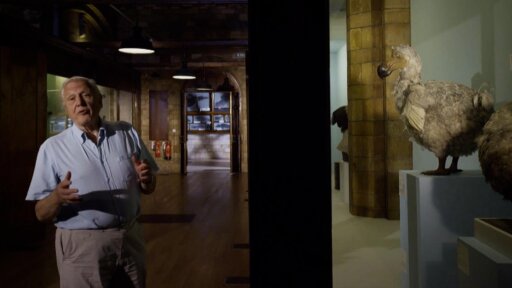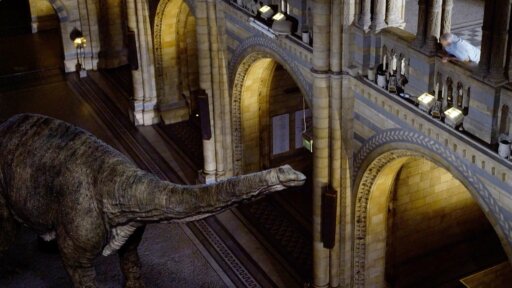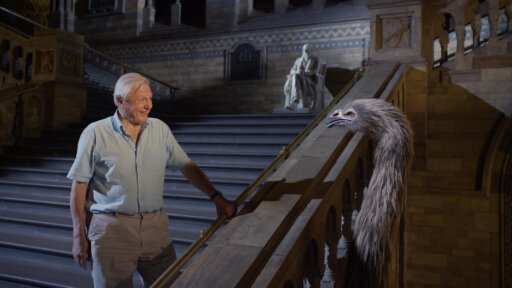Sir David Attenborough explores the scientific research behind the legend of a massive ape, known as “Bigfoot,” the “Yeti,” or the “Abominable Snowman.” Drawing on fossil evidence, he unveils the astonishing scale of this elusive and seemingly mythical creature.
Features



Back in 1951, the famous Himalayan Explorer and mountaineer Eric Shipton came across some huge footprints in a high snowfield that looked as if they'd been made by some kind of giant ape.
Shipton's Sherpa companions had no doubt about what had made them: a Yeti, an abominable snowman.
Well, there is one small specimen acquired by the museum and kept in its vaults that might just explain those prints.
It was found in a shop in Hong Kong that sold Chinese traditional medicines.
It was a molar tooth of some kind of ape-like creature, except that it was huge.
The museum has only got a fragment.
This is it.
But here's a cast of a complete one, and it's six times the size of one of ours.
It was given the name Gigantopithecus, Giant Ape.
After that discovery, one of two more teeth were discovered, but nothing much.
Until eventually a piece of the lower jaw was found.
The original is now in America, this is a cast, but here is the lower jaw.
If this animal had a skull with the same proportions as those of a gorilla, its complete skull would've been this big.
This was a true monster.
So we know a huge ape did exist, Gigantopithecus.
It could well have stood three meters tall, in which case it would've been eight times as heavy as I am.
And if you're as heavy as that, you don't spend much time climbing in trees because they won't support you.
So the likelihood is that his arms are quite short, and he walked upright.
He was bipedal.
I'll get out of the way.
